PORT FOLIO Tan Wei Shuen


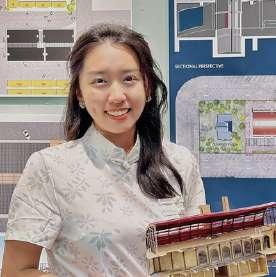

Tutored by: Ms. Intan Liana Samsudin





Tutored by: Ms. Intan Liana Samsudin

located in the state of Perak, Malaysia, has a rich history dating back to the 16th century. Originally known as Teluk Mak Intan, it was a prominent trade and transportation hub due to its strategic location along the Perak River. The town played a crucial role in facilitating the tin trade during the British colonial era, and it witnessed significant economic growth during this period.
One of Teluk Intan’s most iconic landmarks is the Leaning Tower, officially named the Menara Condong. Constructed in 1885 by a Chinese contractor, the tower served as a water storage facility for the town. Its unique architectural design, resembling the Leaning Tower of Pisa, has made it a famous attraction and a symbol of Teluk Intan Today, it continues to thrive as a vibrant town with a mix of historical charm and modern developments. The Leaning Tower remains a popular tourist destination, attracting visitors who want to explore Teluk Intan’s historical significance and cultural heritage.

 The Leaning Tower (Menara Condong)
The Leaning Tower (Menara Condong)
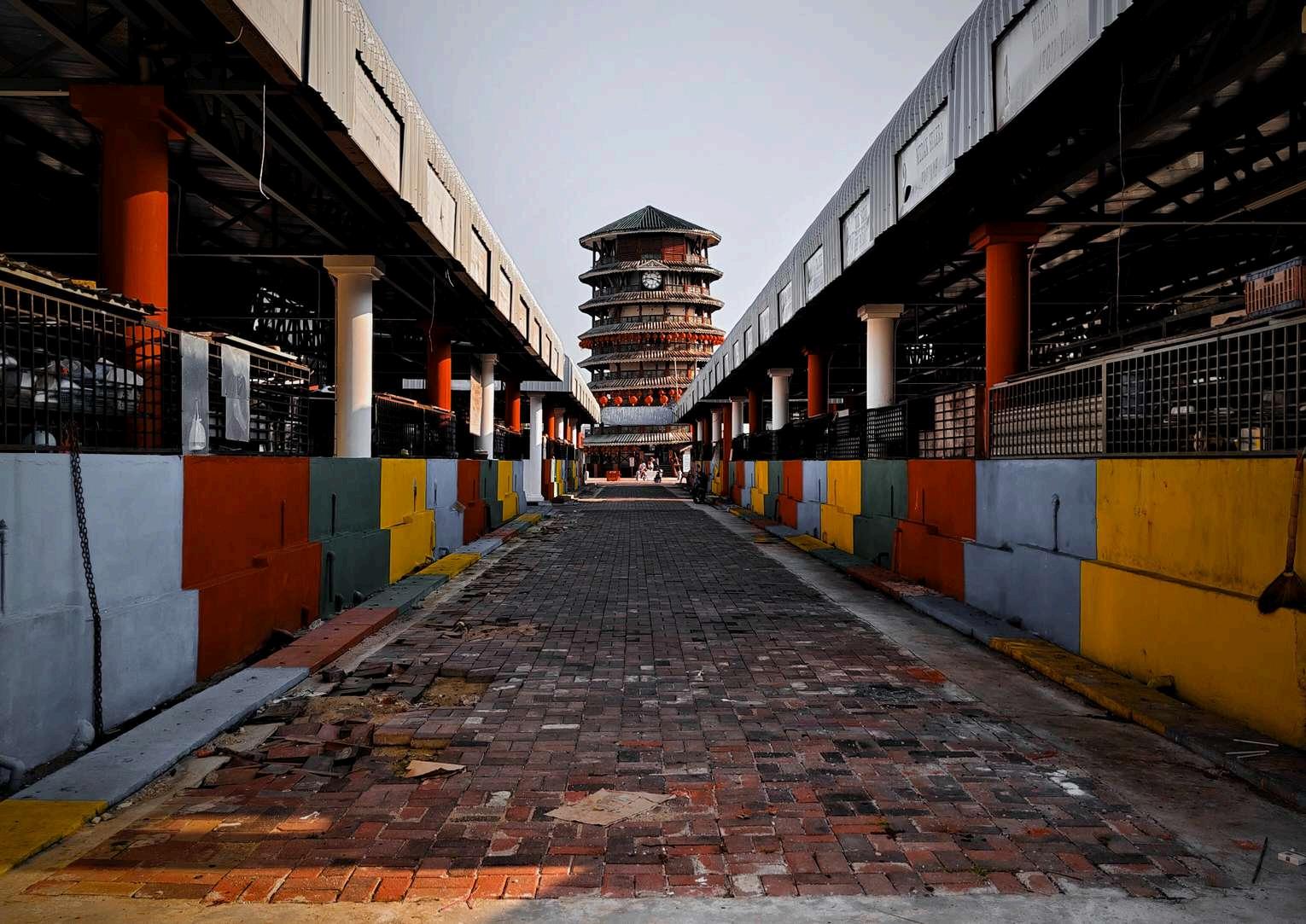


 Old Palace (Istana Lama Raja Muda)
Old Police Station (Balai Polis Lama)
Old Palace (Istana Lama Raja Muda)
Old Palace (Istana Lama Raja Muda)
Old Police Station (Balai Polis Lama)
Old Palace (Istana Lama Raja Muda)


 Pulau Bangau Burung Bangau
Pulau Bangau Burung Bangau
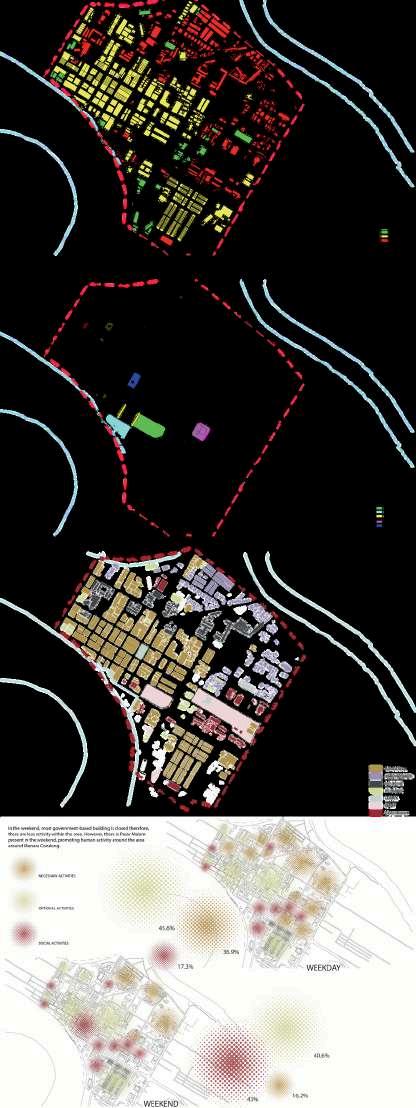


AmTontroduceTeukInansrchcutuahstoryenvionment anditsawareness




1960s-around100becaoperae
Accordngtoanewsartcein2021 numberogBecastaredto decneasocalsweehavngahardtmefndngproi
Mostpefe oworkngnfactoresaswageskeepnceasng
ObservatonTherearenomorebecaaoundnow

Ongoingproject Foodimmgrationpoect Strengthentheedgeof herver) Dranagebeingconstructeddeepertoavodfood




POTENTIALPROGRAMMINGFORFUTUREDEVELOPMENT
Renovations(GuttonSquare(Done)PusatpenajadJn MaharaniPasarBesarTeukIntanTamanRekreasiRiverfront)
TourstPackage(exampe:2DN)
CultuaStreetandArtStreet
Locatedinthemddeofthectycenter strategic locaton)
Directvewofmenaracondong
Soundpolutonduetobeingpaaewththebusy manroad
Toursmdestinatonnearby
Easyaccesstoste2andsite3
Lackofzebracrossingaroundtheste
Notransportationsuchasairportandbusstatonn
TeukInanforthetouist ocomeover

Tobrngback hegloryageofking oad Createjobopportunites(F&B) Attactmoretourists BuidapositveimageofTeukntan ncreasethevoumeoftoursts VstPeakntiatve2024forMenaraCondong nfomatonprovdedonne


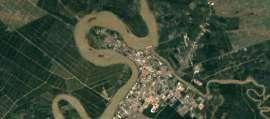


Thenceasenpopuaons hownasthegowhspeadtothe ousktsfomthemantown
n 984 hegeeneiesweequtedomnan Howeve astme estherearemoebuidngs&house,whchdefn eycaused by hencreaseofpopuaon




https://annatashazulwork.wixsite.com/ar415-design-studio


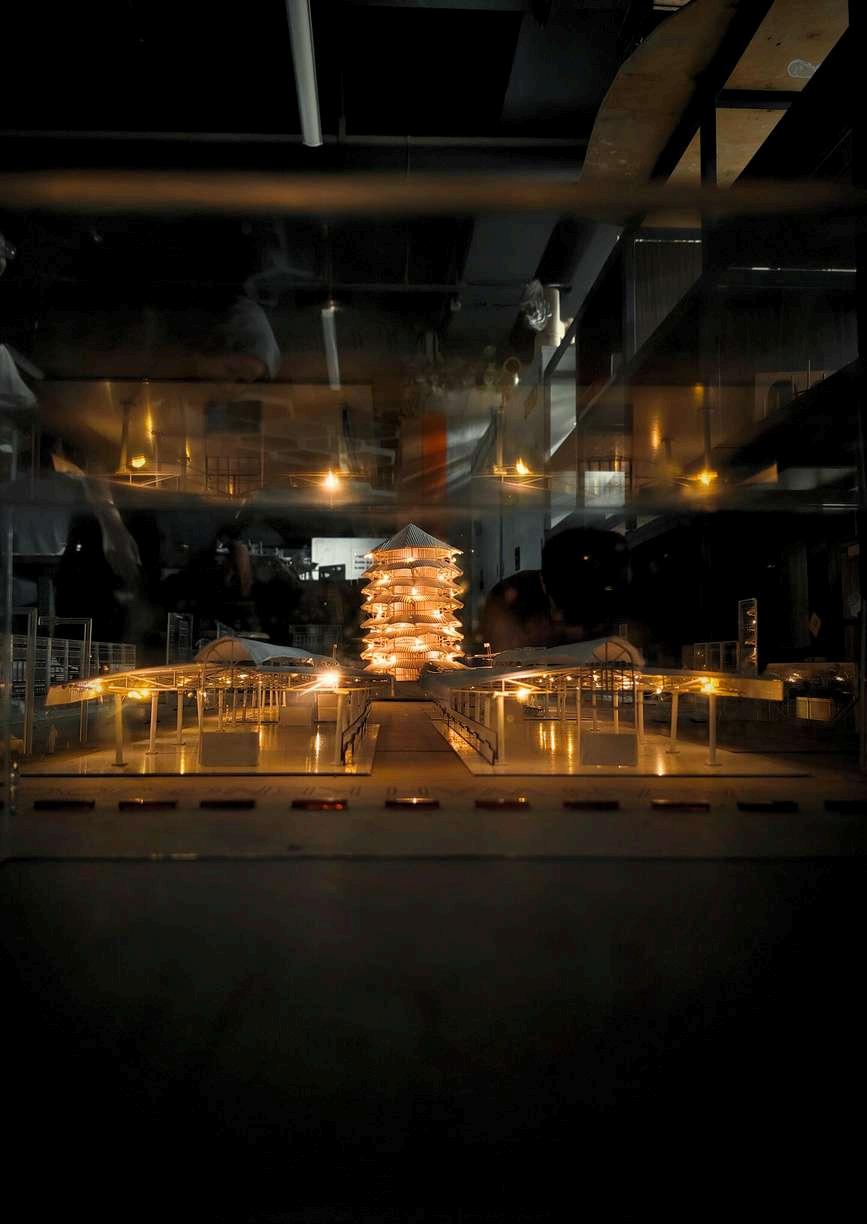





Our cultural mapping project focuses on Historical Landmarks and Monuments Mapping, including war memorials, old cannons, the King George V Silver Jubilee Memorial, the old palace, the Sultan Abdullah Muhammad Shah Mausoleum, the Sungai Kerawai Elephant Memorial, the Sungai Bidor Railway Bridge, the Pelabuhan Wharf, Kepala Kereta Api, and more. Breaking from the conventional approach to cultural mapping, we've crafted our project into an interactive board game, blending elements from both Monopoly and card games to enhance richness and playability. After thorough research and study by our group members, the game accommodates 3-6 players and aims to educate players about Teluk Intan's Historical Landmarks and Monuments through gameplay.


The Monopoly Map is designed to fold into a box with a wooden lid, containing game cards, two dice, and six train miniatures for players to use as game pieces, combining functionality with portability.



On the Monopoly map, landmarks are arranged along the railway tracks in chronological order, representing a timeline. Players move their train miniatures along the tracks according to game rules. The first player to reach the finish line wins.








































 Game Guide
Dice ×2
Cards Design
Game Guide
Dice ×2
Cards Design

In urban areas, architects might engage in infill development, filling in gaps between existing structures with new construction This helps optimize land use and can contribute to the revitalization of urban areas. refers to the intentional and strategic design actions taken within an existing built environment to alter, enhance, or transform it These interventions can take various forms, ranging from small-scale modifications to large-scale additions or renovations. The goal is often to address specific issues, improve functionality, or introduce new elements while respecting the context and character of the existing architecture.
Architectural interventions are frequently employed to modernize buildings, incorporating contemporary technologies, energy-efficient systems, and sustainable design practices This helps existing structures meet current standards and user needs.
Some architectural interventions are temporary in nature, such as installations or pop-up structures These temporary interventions can bring attention to specific issues, test design concepts, or provide unique experiences.



The conceptual model divides Teluk Intan into three layers: The Once Prosperous Teluk Intan, Transportation, and Senior Citizens. These three layers are interconnected and narrate a story about a little boy who was born and grew up in Teluk Intan. He witnessed the once prosperous town, which was brought up by transportation, but as he grew older, these modes of transportation declined. The same characteristic appears to be happening to the town, as people are gradually neglecting it and forgetting its past vibrancy
1
The Once Prosperous of Teluk Intan
A little boy was born here, in what was once one of the most prosperous cities at that time. In the early days, the town was known as Teluk Mak Intan, after a female Mandailing trader. It was here that the Perak rulers held court from 1528 until Kuala Kangsar became the royal town in 1877.
During the British protectorate era, the name was changed to Teluk Anson (Anson Bay), in honour of a British officer, Major-General Sir Archibald Edward Harbord Anson, who drew the plan of the modern township in 1882 In 1982 during the centenary of the town's establishment, the name was changed again to Teluk Intan (Diamond Bay) by the Sultan of Perak.
2
Transportation
The prosperity at that time was largely attributed to local transportation. There were three main modes of transportation back then: trishaws, boats, and trains, which no longer exist now due to various unavoidable reasons.
These modes of transportation significantly increased employment opportunities for people and made business dealings more convenient.
3 Senior Citizens
The phenomenon of an aging population in the local area is becoming increasingly apparent. While the elderly prefer to remain, the younger generation ventures out for better opportunities. Just like the empty nesters who remain, it appears that people are gradually neglecting this place, forgetting its past vibrancy.

The aim is to explore and reinterpret existing place making in Teluk Intan, emphasizing either the Critical Regionalism or Tectonic Expression theme. Students are expected to delve into the selected theme while focusing on the exploration of facade studies and innovative design interventions.
Tectonic expression in architecture refers to the manifestation of the constructional and structural aspects of a building as integral components of its design and aesthetics. The term is derived from "tectonics," which relates to the science of construction and the structural behavior of materials. The key principles of Tectonic Expression are i)structural integrity, ii) material authencity, iii)honest construction.
The architectural features intent to demonstrate the exposed structural elements, joints and connections, and functional aesthetics. While the underpinning philosophical is truth to material and honesty in design.




Heritage Trails
1. The Leaning Tower
2 Old Police Station
3 Old Court House
4 The War Memorial
6 King George v Silver Jubilee Memorial
Transportation Infrastructure:
5 Former Teluk Anson Town Railway Station
8 Sungai Bidor Railway Bridge
Sultan-Era:
7. Old Palace of Raja Muda
9. Sultan Abdullah Muhammad Shah Mausoleum
The trail is a tour of historical and cultural sites covering total 9 landmark buildings clustered within a geographic area surrounding the Leaning Tower of Teluk Intan. Bicycles of varying sizes are available for rent at Padang Speedy. However, it is more suitable to locate it around The Leaning Tower since it is iconic of Teluk Intan, it is a good starting point for visitors to rent bicycles to explore the town.


In the past, the town of Teluk Intan is a very important city because of its strategic position of this city with port facilities and railway lines that can connect Teluk Intan with the network to the north and south of the peninsular. Reviving Teluk Intan's transportation and tourism sectors with a pressing need to reintroduce soft mobility. Bicycles offer a practical and straightforward solution, with added sentimental value for the elderly and a viable alternative for the younger generation's transportation needs.


Currently, transportation predominantly favors cars and motorcycles, with little emphasis on the potential benefits of soft mobility for exploring the town.

3 main modes of transportation back then: trishaws, boats, and trains which no longer exist now and have been forgotten.
To connect trails via soft mobility.
To bring back the value and history of Teluk Intan transportation.
Heritage spots are scattered around and not easily accessible on foot, making it less friendly for tourists to explore.

Thecity's aging population. Elderly residents and tourists face barriers to accessing attractions beyond main tourist spots.

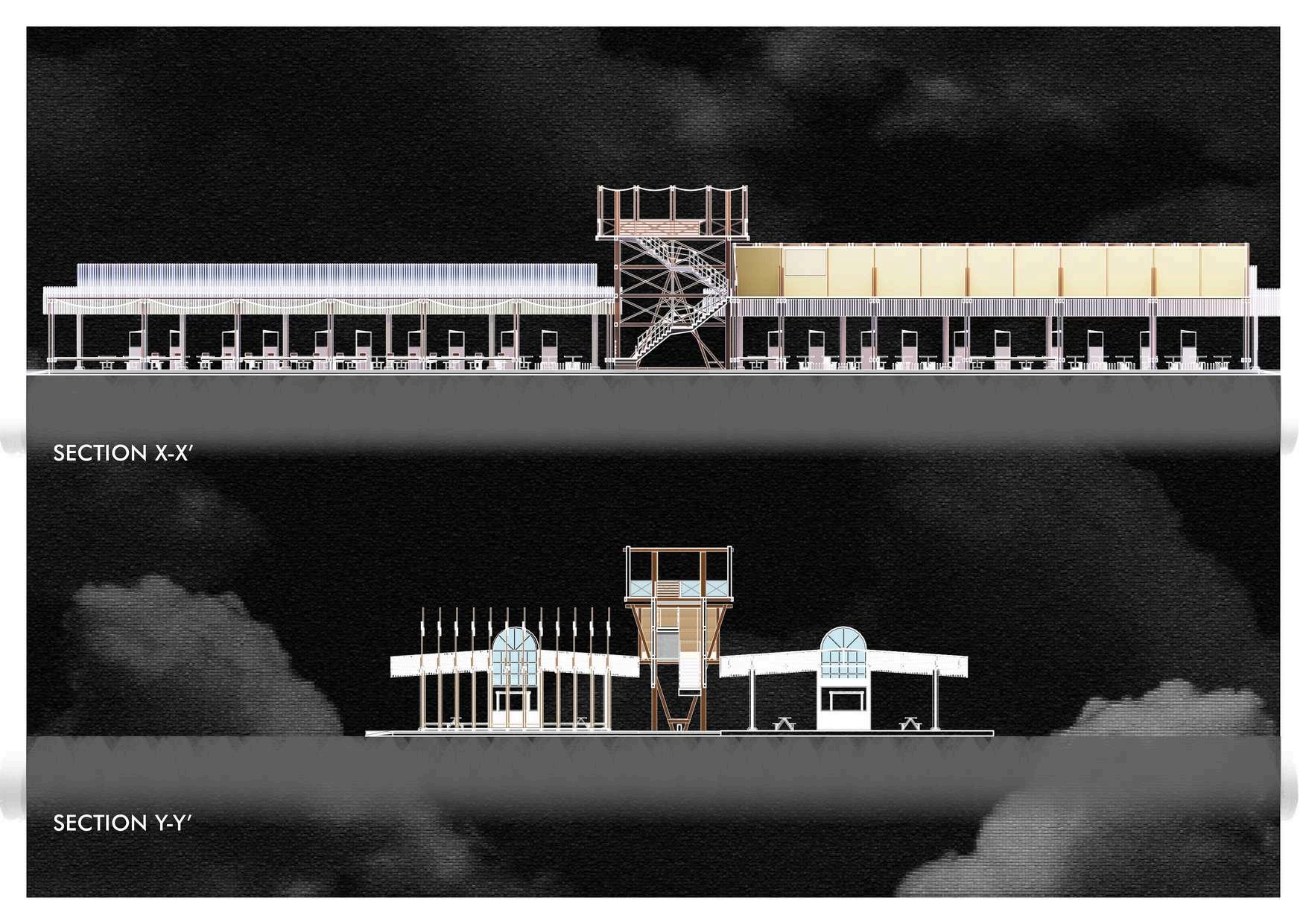


BICYCLES PARKLET
TIMBER STRUCTURE
OFFERING WITH SEATING
OFFERING TABLE AND CHAIRS WITH FABRIC ABOVE AS SHADING DEVICES

ABLE TO VIEW THE LEANING TOWER AND THE RIVER


1. LAMINATED WOODEN PANEL
2. HARDWOOD TIMBER BEAM 200MM * 100MM
3. HARDWOOD TIMBER SECONDARY SUPPORT 80MM * 200MM
4 HARDWOOD TIMBER COLUMN 100MM * 200MM * 3000MM
5 HARDWOOD TIMBER 200MM * 100MM * 7878MM
6 HARDWOOD TIMBER SUPPORT 100MM * 200MM * 4800MM
7. HARDWOOD TIMBER SUPPORT 100MM * 210MM * 1350MM
8. FABRIC SHADING DEVICES
9. HARDWOOD TIMBER 200MM * 100MM * 4517MM
10. HARDWOOD TIMBER TABLE @ 40MM THICK






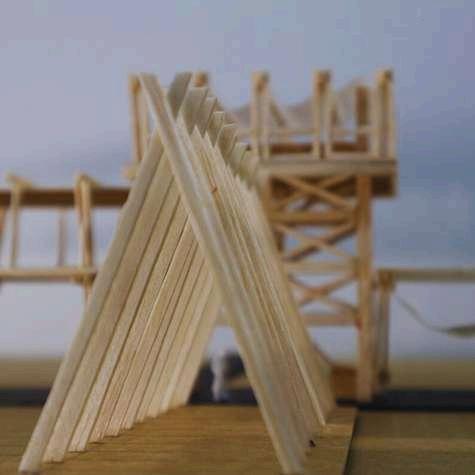




The primary goal of this project is to design a Tourism Centre, incorporating elements of either eco-tourism or cultural tourism themes, in response to the characteristics of the selected site. Several key considerations should be prioritized to ensure a comprehensive visitor experience. These include seamless integration with the natural or cultural surroundings, intuitive wayfinding for tourists, and the incorporation of engaging and educational exhibits. Cultural sensitivity is also crucial, with efforts made to respectfully integrate local cultural elements and collaborate with artisans or communities for authentic representations. Additionally, functionality is prioritized, ensuring adequate spaces for exhibits, interactive displays, visitor services, and administrative functions, while allowing for future expansion or adaptability.
The railway track from Tapah Road to Teluk Anson / Teluk Intan had to be built to facilitate the transport of tin ore and logs from Lembah Kinta and Batang Padang to Teluk Intan. Although the Port of Teluk Intan is not really located in the river basin, but the Perak River at that time was deep and wide enough for steamships to dock. Warships and palm oil ships have also docked at Teluk Intan Port. The locals call it waf.
The railway also facilitated the entry and exit of workers and miners to the workplace. The train was also often loaded with mangrove timber, which was widely used as firewood in the mines. The advent of the railway was a boon for the inhabitants of the towns. Travelling on the rough bridle roads of 1885 was hazardous because of notorious gangs. The railway was faster, safer and brought significant growth to the tin industry.

The railway construction work has faced many difficulties because a bridge had to be built to cross the Bidor River, a main river which pours into the larger Perak river. Finally in 1893 the Tapah Road and Teluk Intan railway was successfully completed. On September 6, 1893 the railway was ready for use. The Teluk Anson and Tapah Road railway was officially opened for the machinery route on 18 May 1893.


 Teluk Anson town also served as an important train station terminal in Lower Perak which also functioned as an attractive place and assembly of agricultural and mining yields for districts bordering Lower Perak. This activity caused the town to become a trade center that utilized train services for delivering trade goods such as tin ores and rubber.
Teluk Anson town also served as an important train station terminal in Lower Perak which also functioned as an attractive place and assembly of agricultural and mining yields for districts bordering Lower Perak. This activity caused the town to become a trade center that utilized train services for delivering trade goods such as tin ores and rubber.





D e s i g n D e v e l o p m e n t
 Mock-up Model to showcase the early stage idea of underground, bridge and waterbody combination.
Mock-up Model to showcase the early stage idea of underground, bridge and waterbody combination.









“A visual representation that assists the viewers to understand the overall completed design and architectural rendering, and therefore stimulate the potential buyers’ purchasing desire.”
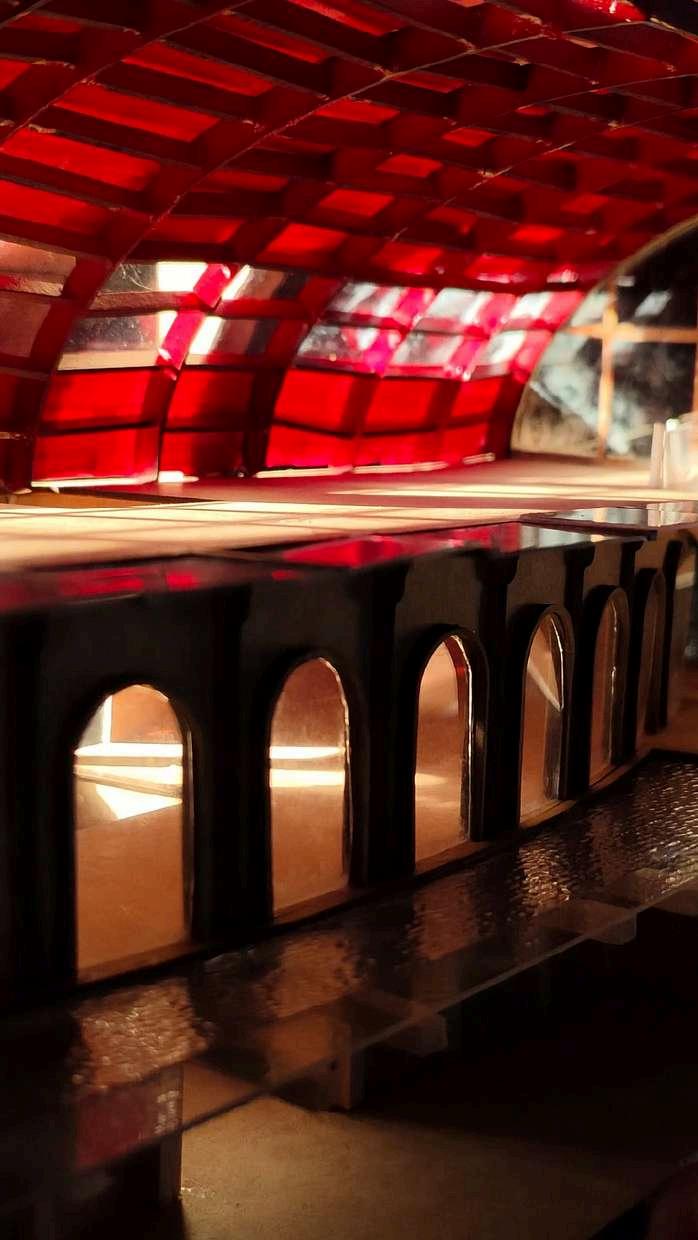





A walkthrough video of museum made with Enscape.
https://youtu.be/43m8YigkboI?si=OC5Ahyj2NZu Rwqs




 Presentation Setup
Class of Architecture Design Studio 4 (2024/01)
Presentation Setup
Class of Architecture Design Studio 4 (2024/01)


